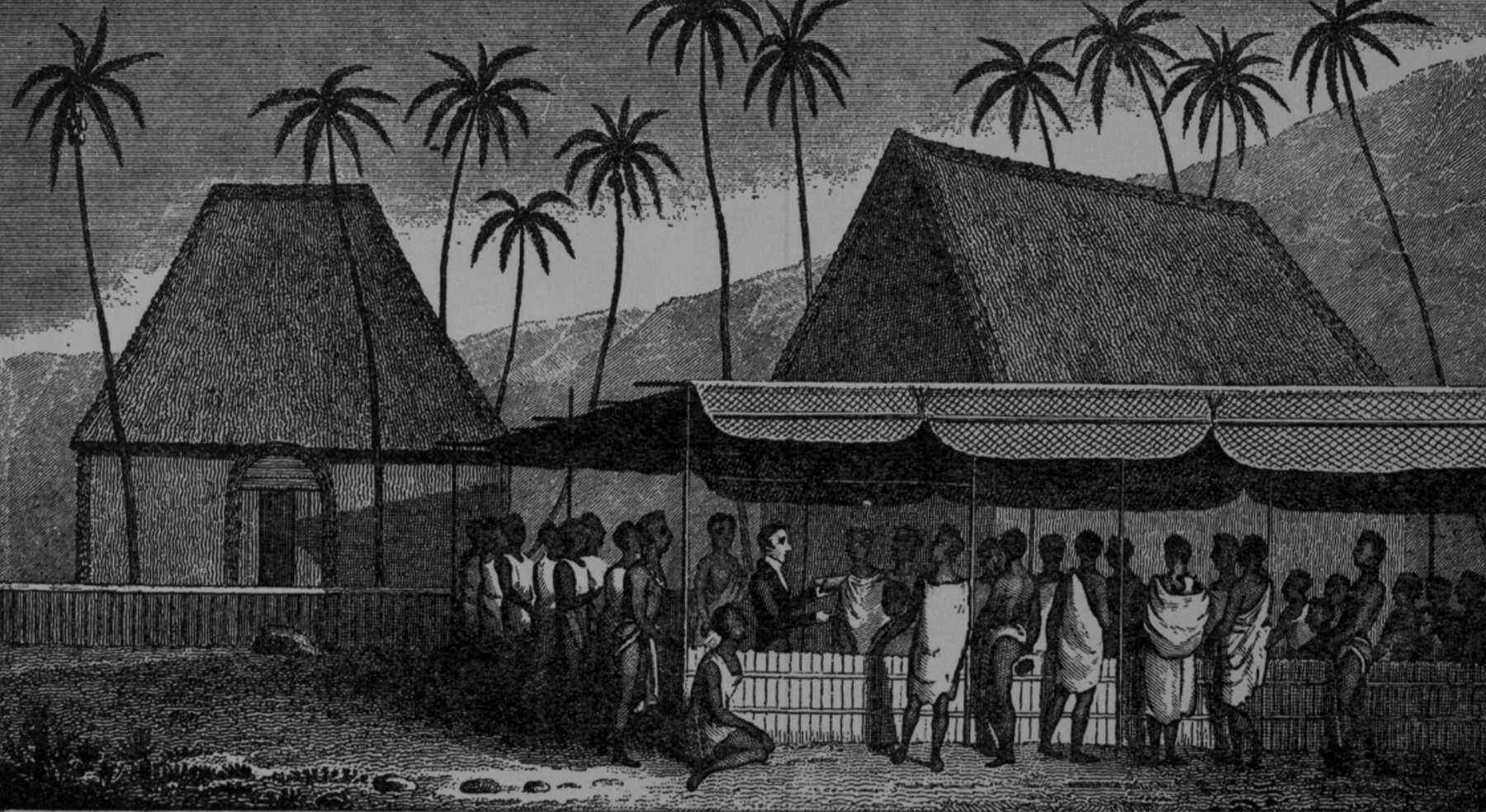A grand feast was held to commemorate the death of Kamehameha and the missionaries were invited to participate. During April, the missionaries had settled into their hut, made more comfortable with gifts of furniture from a number of ali‘i, and Hopu and Kanui had joined the king’s retinue. The Thurstons were adjusting to their new life, discovering with a mix of horror and amusement aspects of Hawaiian culture they wouldn’t have dreamed of.
For three weeks after going ashore, our house was constantly surrounded, and our doors and windows filled with natives. From sunrise to dark there would be thirty or forty at least, sometimes eighty or a hundred. In their curiosity they followed the ladies in crowds from place to place, with simplicity peering under bonnets, and feeling articles of dress. It was amusing to see their efforts in running and taking a stand, so that they might have a full view of our faces.
The king’s orders were that none should be taught to read but those of rank, those to whom he gave special permission, and the wives and children of white men. For several months his majesty kept foremost in learning, then the pleasures of the cup caused his books to be quite neglected. … The king brought two young men to Mr. Thurston, and said: ‘Teach these, my favorites, Ii (John Papa I‘i) and Kahuhu. It will be the same as teaching me. Through them I shall find out what learning is.’”
— Lucy Thurston, Life and Times of Lucy G. Thurston, pp. 41-43.

